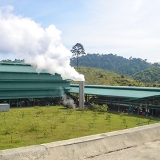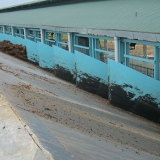

To begin with, the crude oil carries with it all types of matter. Some of the solid materials are: fibers from the palm fruit, dirt, and fragments. It is important to remove from the mixture the large particles first. There is no way that the solids can be allowed through. Water is added to the raw oil where it is passed through a vibrating screen. It is common knowledge that the vibrations separate the solids to the top of the solution. The separation process goes forward by sieving the material that separates at the top. This however does not take away the small particles and water which can as well oxidize upon coming into contact with air hence affecting the quality of the palm oil.
• Suspended Solids Separation from the Crude Oil
It is expected that at the end of the process, the composition of the crude oil should be 90% oil and 10% water. The oil is heated by live stream or in closed system using heating coils. The separation of the suspended solids is done with the “oil separation tank” method. The heating facilitates the gravity separation. However, this procedure is not very effective. Only about 50% of the suspended material is removed. The remaining material is either in the settled residue or the suspended solids. This can however be effected by adding the centrifuge to the oil clarification system. The 3-phase decanter improves the separation process. At this stage, the oil that is settled at the tank is taken in the sludge tank where it is treated to have more oil extracted from it. What lies on the upper part of the separating tank is collected using the funnel and goes to the oil purification system.
• Purification Process
By now, there are still some suspended solids in the palm oil. They need to be removed during the production of palm oil by all means. Some of the solids are very fine. The raw crude oil that settled at the top in the settling tank is hereby mixed with the recovered oil that was taken in the sludge tank. It is well treated before mixing. The combined mixture is made to go through the purification process. The process is enhanced and improved by use of centrifuges. This is the final part of the palm oil purification process. It all entails the removal of remaining solids that are commonly smaller and finer. The centrifuges have an automatic cake discharge and cleaning system too.
• Oil Drying and Cooling
A lot of water which has been previously added to the palm oil needs to be removed from the purified crude oil. Remember that the final product should only contain 90% crude oil and10% water. The oil is subjected to a treatment process that is referred to as oil drying and cooling process of palm oil production plant. What other better way to do away with the excess water than to expose it to evaporation? In this regard, the purified oil is introduced to a vacuum evaporating system. After the removal of water, the pure crude oil is stored in tanks ready to be sold to oil refinery.
Now you know what clarification of palm oil production demands. It is a process aimed to remove impurities from the crude palm oil. The oil goes through the process of vibration, separation of suspended solids, purification, and finally drying and cooling.



